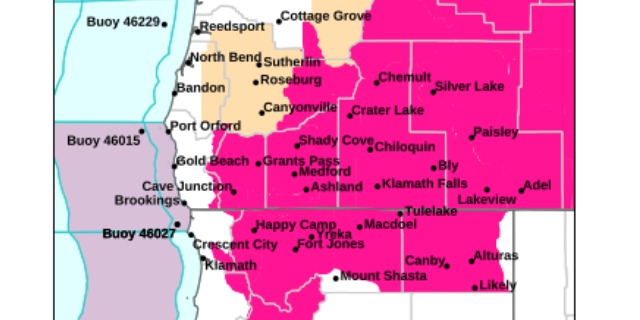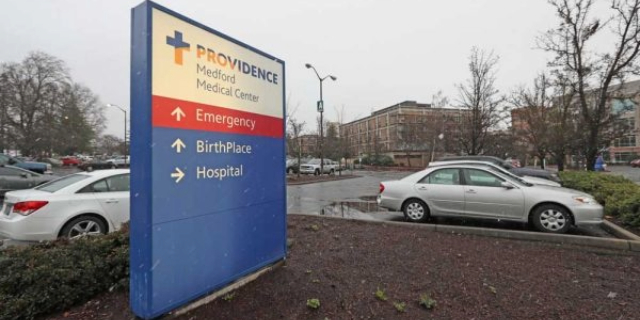Nearly half of Jackson County households cannot keep pace with cost of living
Published 4:00 pm Wednesday, May 10, 2023

- Joshua Williams of Medford, who works as a mailman, said “The cost of living has just gone up tremendously, and it’s not going in our favor.”
Joshua Williams works full-time as a mailman in west Medford, where he lives with his wife, Ashley Williams, and their three young children.
Trending
This week Ashley, a stay-at-home mother, started a part-time job cleaning doctors’ offices at night to help pay for the basics of family life — food in particular.
Joshua said, “The cost of living has just gone up tremendously, and it’s” — he paused — “it’s not going in our favor.”
The Williamses, both 33, live in a precarious but widely shared space, making enough money to stay above the federal poverty line — enough not to qualify for services like food stamps — yet struggling to afford necessities.
Trending
In Jackson County, the percentage of households in this category — called ALICE (Asset Limited, Income Constrained, Employed) — jumped from 24% to 31% between 2018 and 2021, according to the recently released 2023 ALICE report, “ALICE in the Crosscurrents: COVID and Financial Hardship in Oregon.” The state average is 32%.
The report relies on 2021 Point-in-Time data — meaning it is the first ALICE report that captures the county’s experience with the coronavirus pandemic and the Almeda and South Obenchain fires.
According to the report — presented by United Ways of the Pacific Northwest and United For ALICE — the percentage of households in the county at or below federal poverty levels fell slightly over that period from 13% to 12%, which is the state average.
The combined total — ALICE households plus those in poverty — jumped from 37% to 43%, one percentage point below the state average.
That is almost half of the county’s 90,817 households, as of 2021, unsure how to make ends meet and, the report noted, often forced to choose among essentials: Utilities or food? Child care or health care? Transportation or rent?
The percentage of households in Medford and Ashland that are ALICE or below are 46% and 47%, respectively.
The cities with the most households in those categories are Butte Falls-Prospect and Shady Cove, with 52%.
The communities with the fewest are Eagle Point, Sams Valley and the Southeast Jackson Census County Division east of Interstate 5 between the Mt. Ashland exit and the Greensprings down to the Oregon-California border, each with 35%.
Among white households in the county, 22,606 were ALICE, with 7,240 below that level — that is, in poverty — and 44,266 above it, the report said.
Among Black households, 227 were ALICE, 26 were below and 99 above.
Hispanic households in the ALICE range stood at 3,996, with 547 below and 4,249 above.
The county’s Asian households had 329 at ALICE, 86 below and 433 above.
Among American Indian and Alaskan Native households, 183 were ALICE, 184 were below and 343 above.
Hawaiian households had 147 in the ALICE range, 0 below it and 56 above.
Among families with two or more races, 1,955 were ALICE, 402 were below and 2,708 above.
The 2021 median household income in Jackson County was $64,249, trailing the state average of $71,562, the report said.
The upper income for a family of four to live on the ALICE Household Survival Budget — defined by United For ALICE as “the minimum cost to live and work in the modern economy” — in the county is $72,240.
With an income of roughly $60,000 a year to cover a family of five, Joshua has begun to fall behind in utility bills. Recently, he could not make a mortgage payment, he said.
“We’ve had to open up credit cards and stuff like that just to make ends meet and try to make those payments,” he said, “and it’s been a struggle all around.”
Food is the big thing now. He has reached out to family members for help with food, he said.
Dee Anne Everson, CEO and executive director of United Way of Jackson County, said, “Inflation has really clobbered people’s budgets, and wages certainly haven’t kept pace with the approximate 30% increase in food budgets or increases in child care costs.”
The Williamses haven’t needed child care. Ashley has been home with the kids while her husband works his carrier route during the day. Now she won’t be around many evenings and nights.
Monday marked 16 years since they got together. Ashley decided to cook something special — tri-tip beef — for their anniversary dinner. The meal cost even more than they had expected.
“We never get that stuff, ever,” Joshua said with a laugh.
After dinner, Ashley went to her first shift at her cleaning job. The additional money won’t be much — possibly less than $1,000 a month, Joshua said — but it will “hopefully help with food.”








